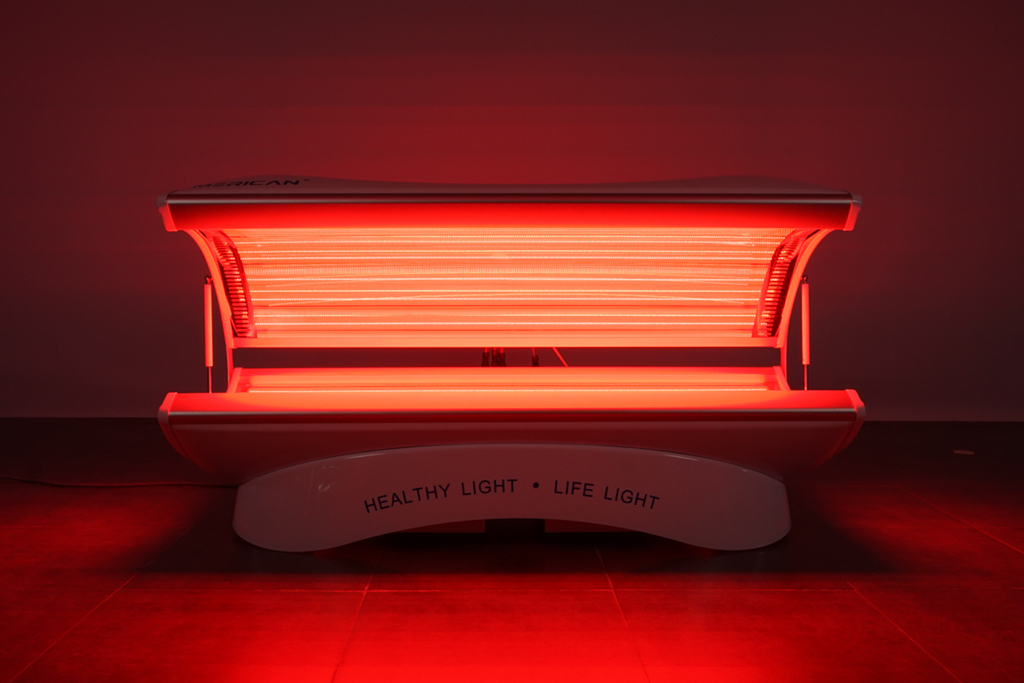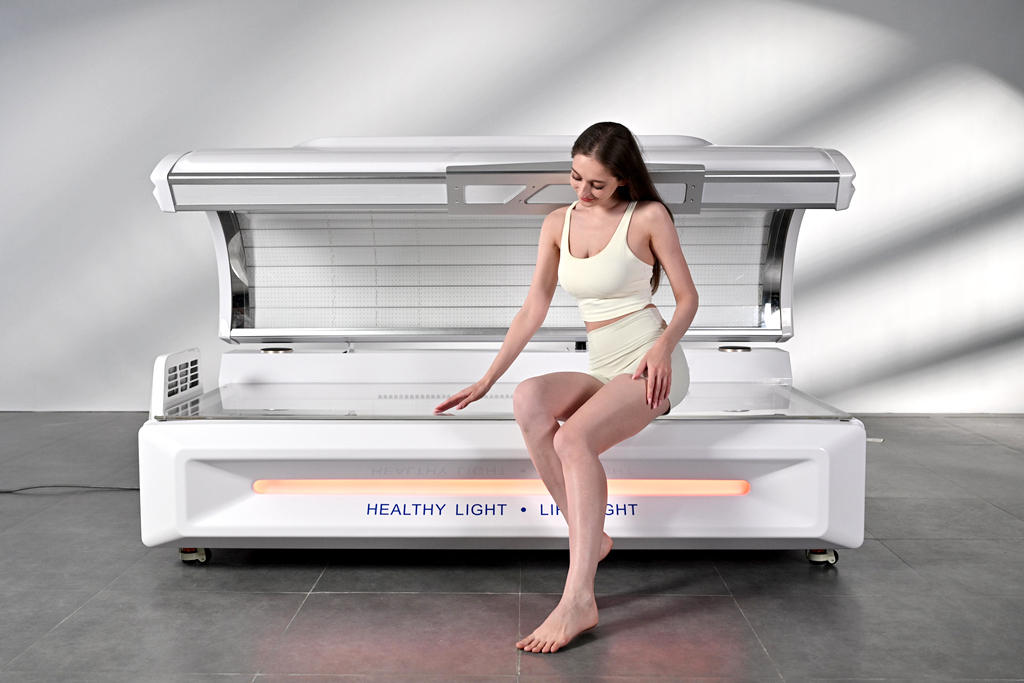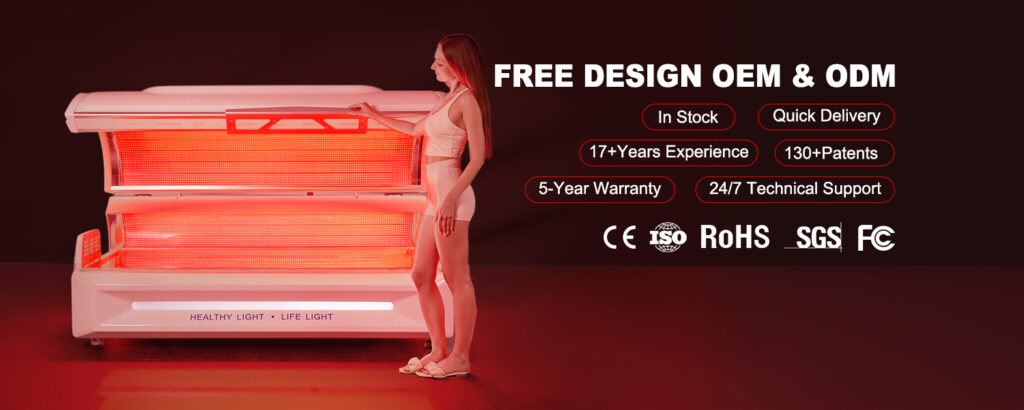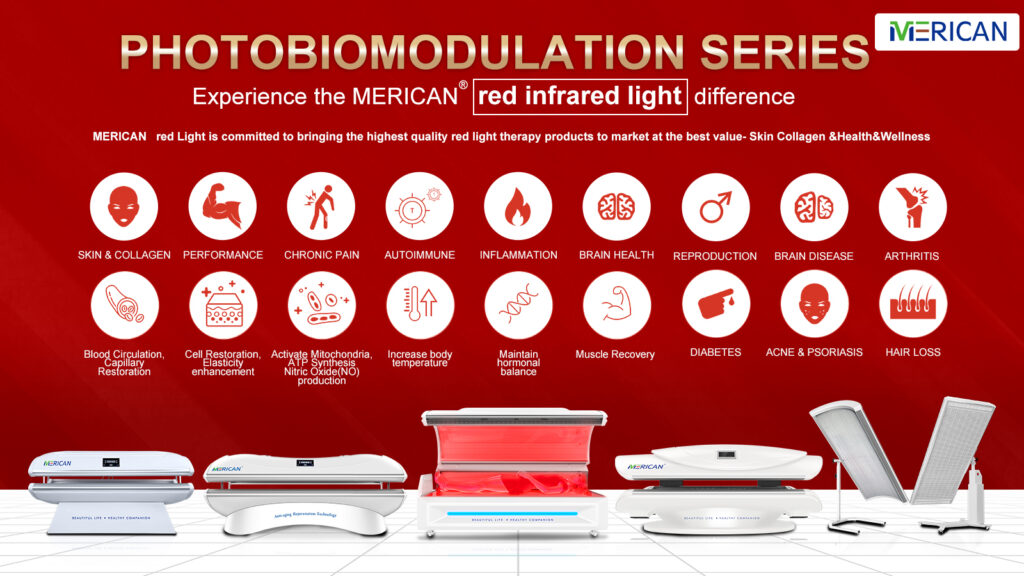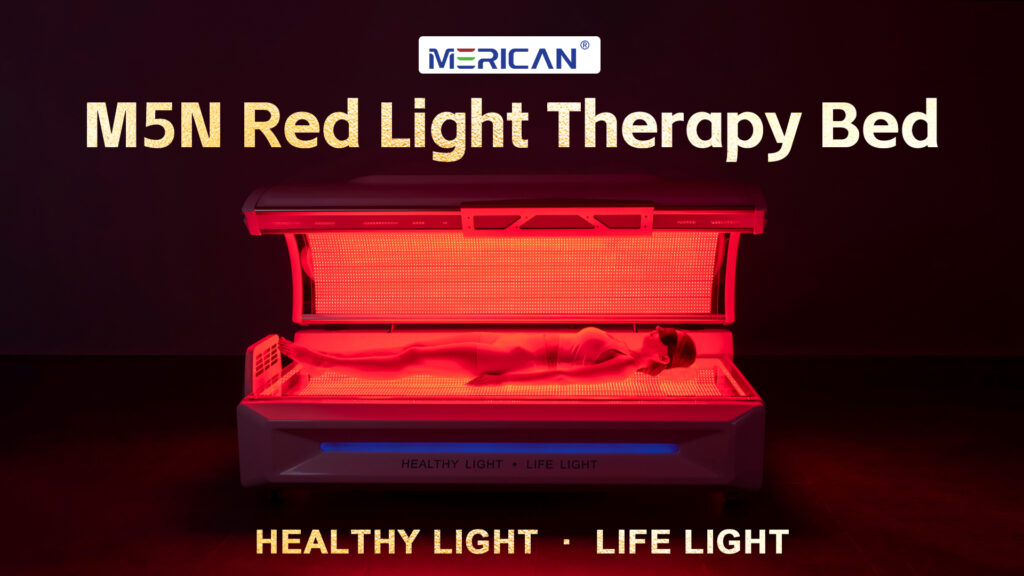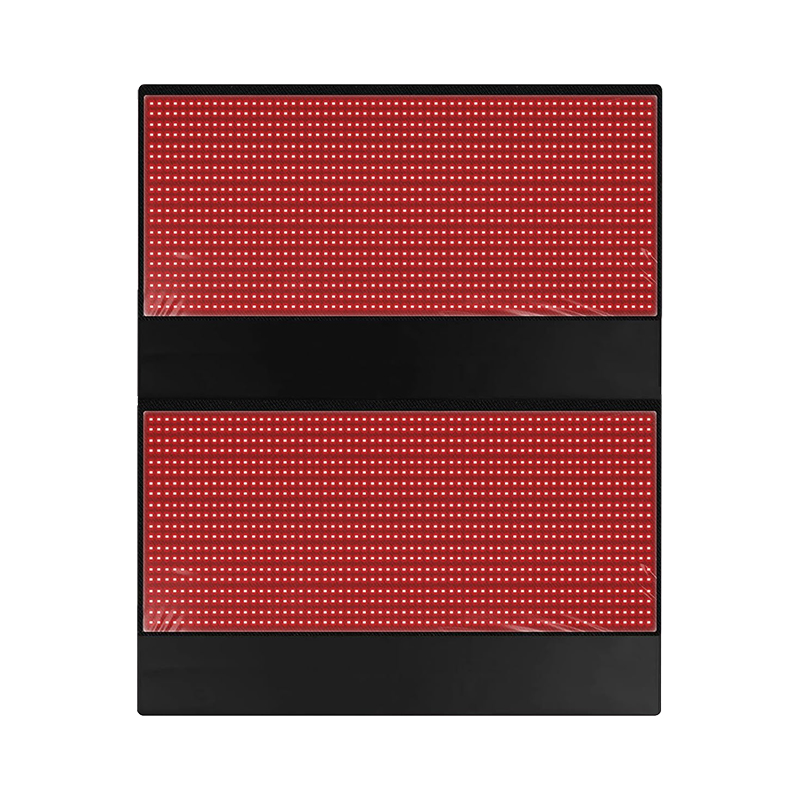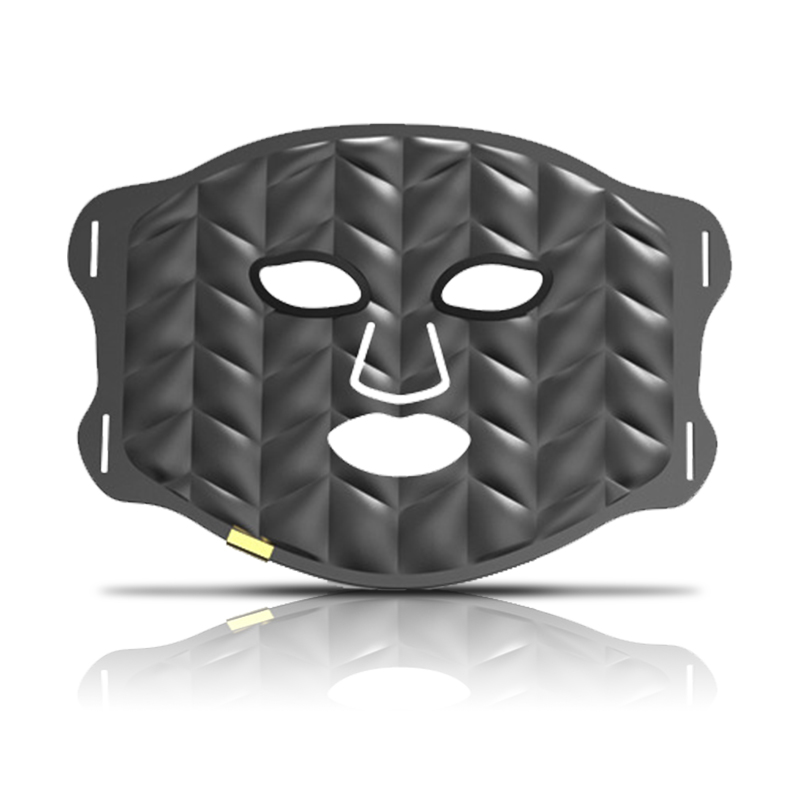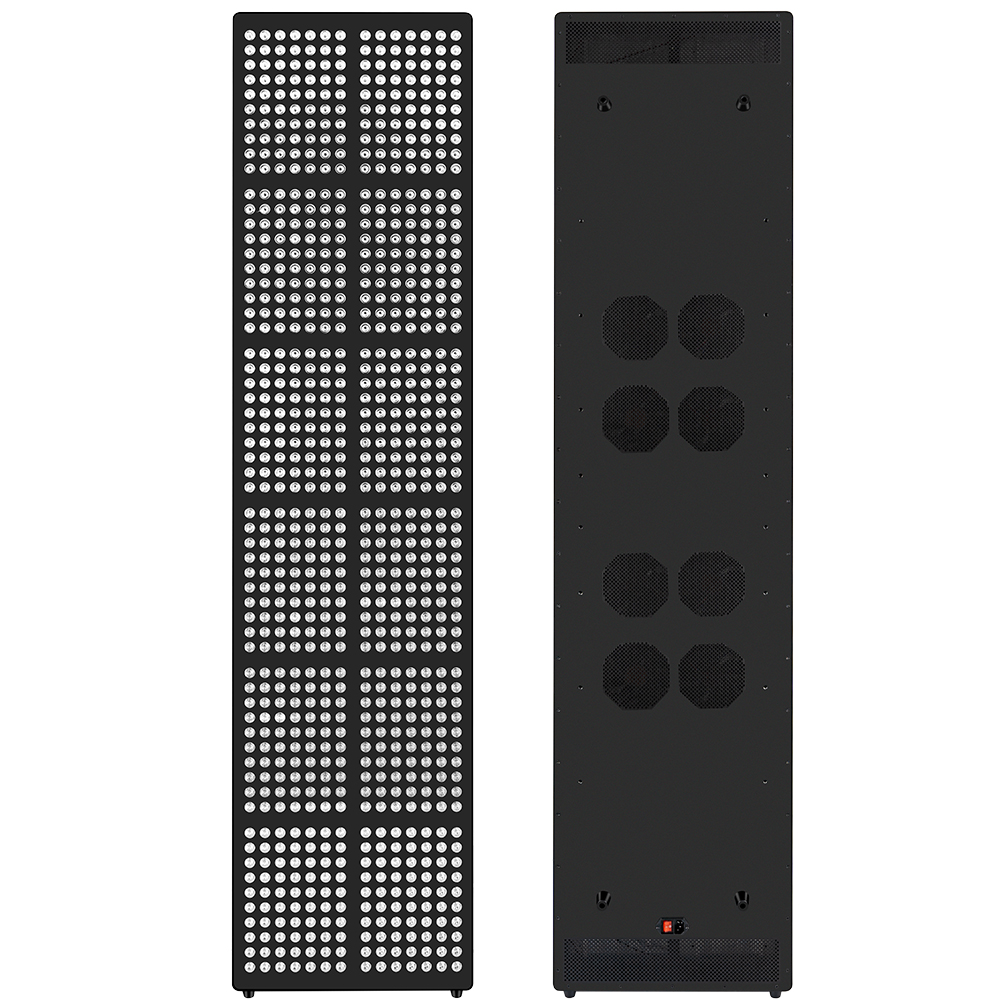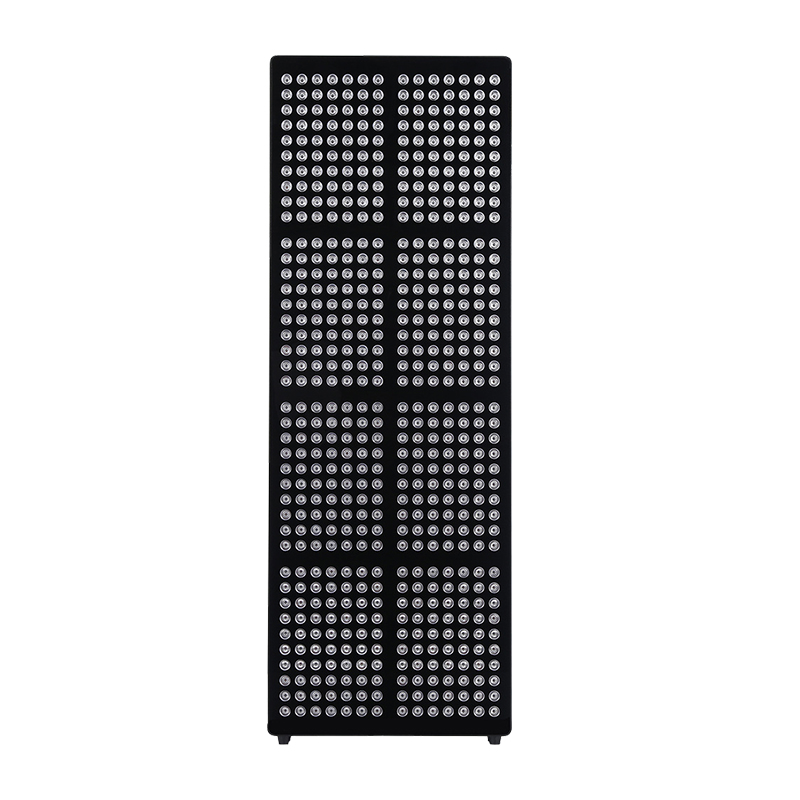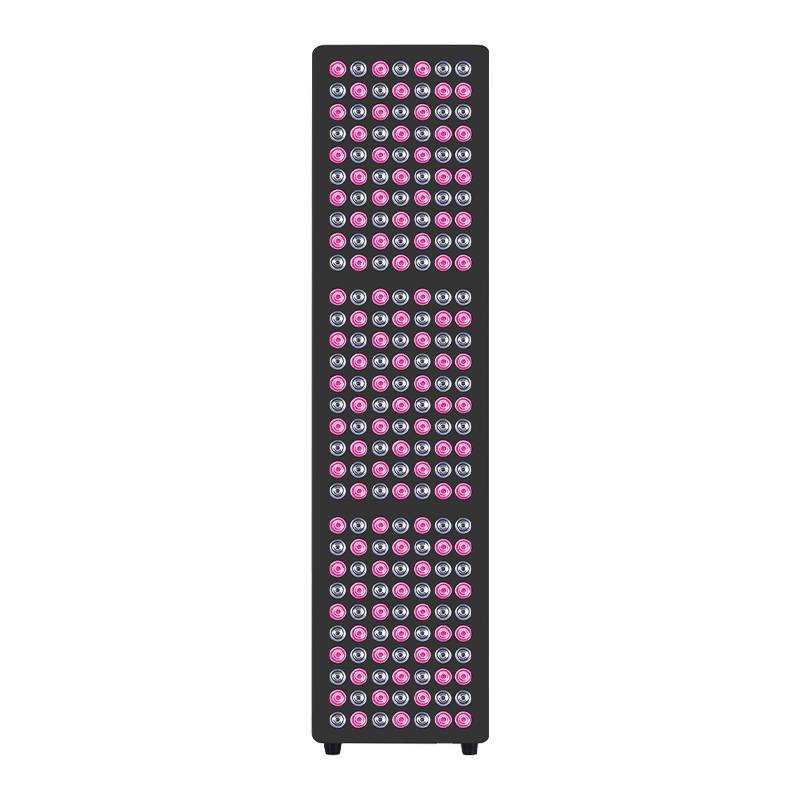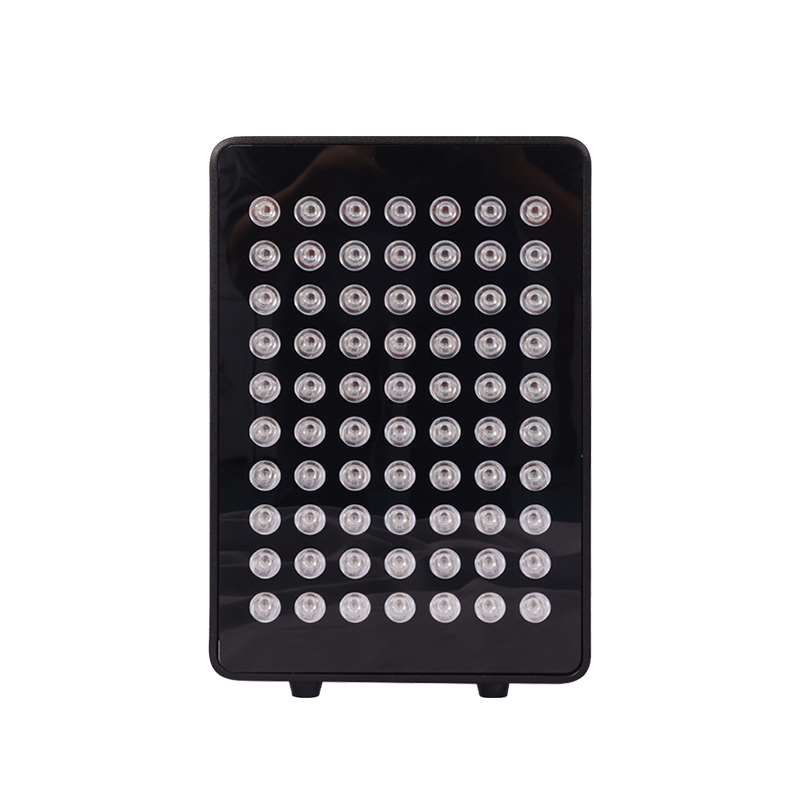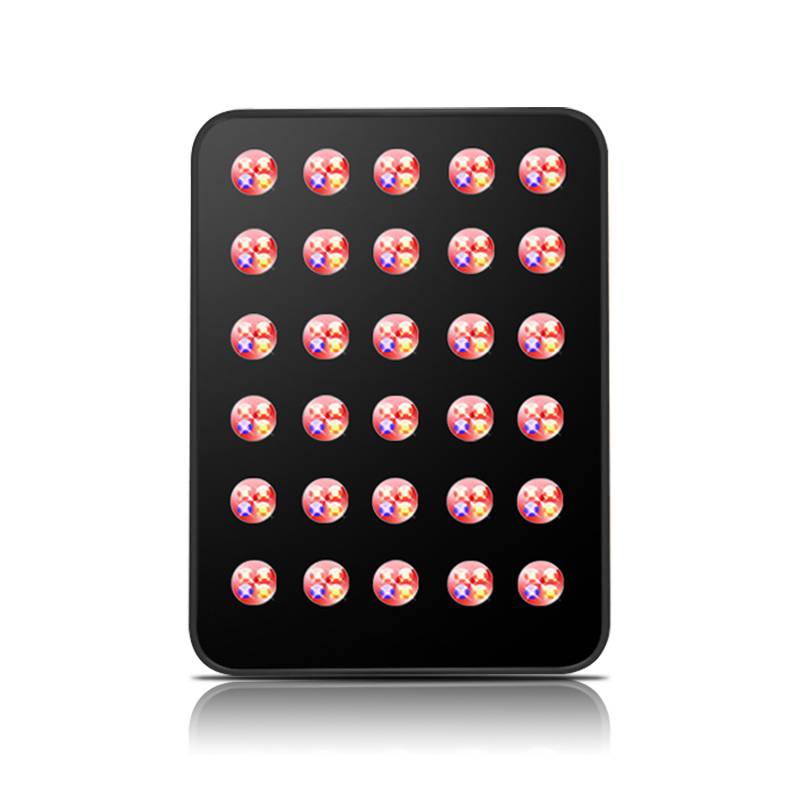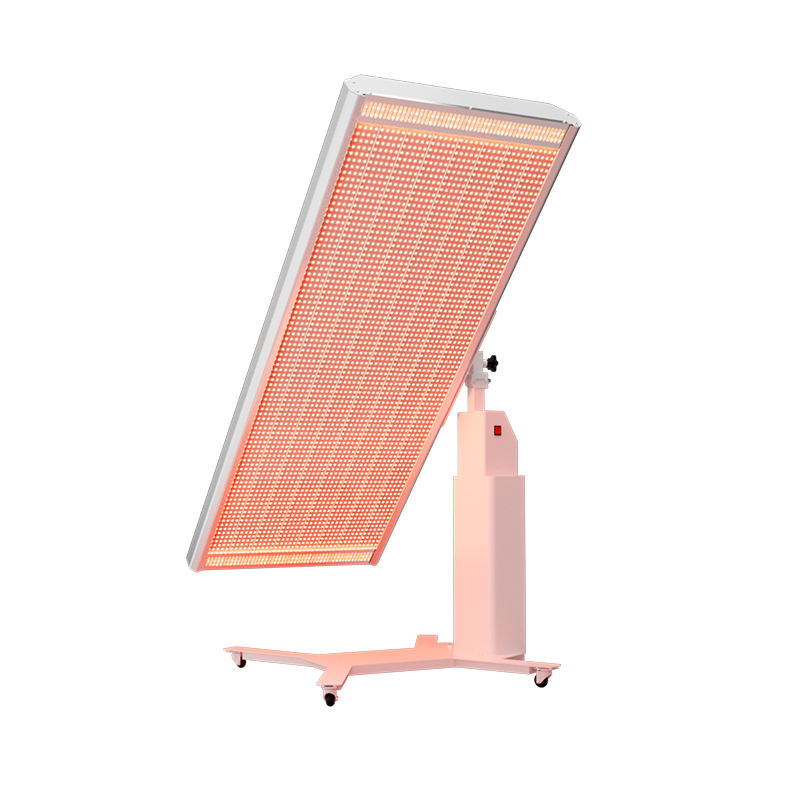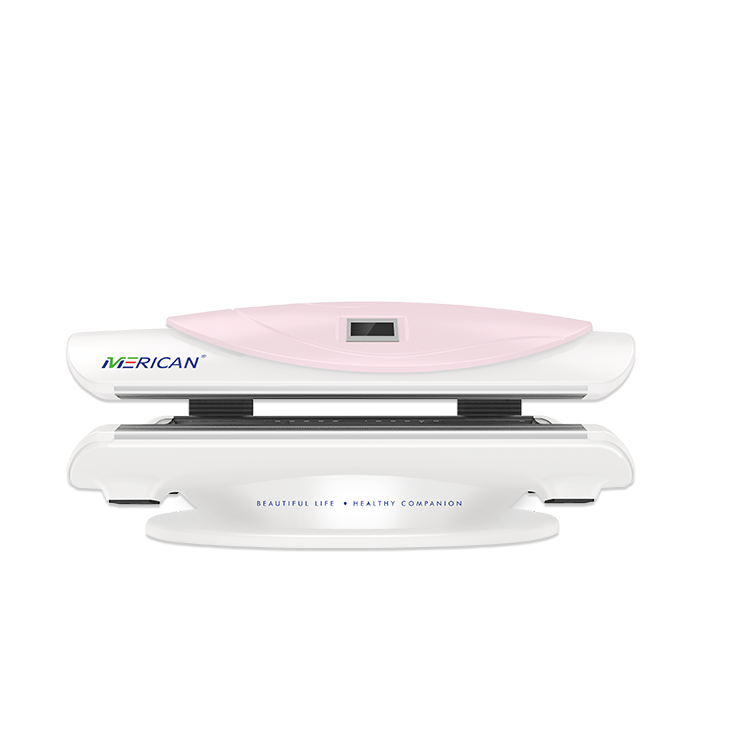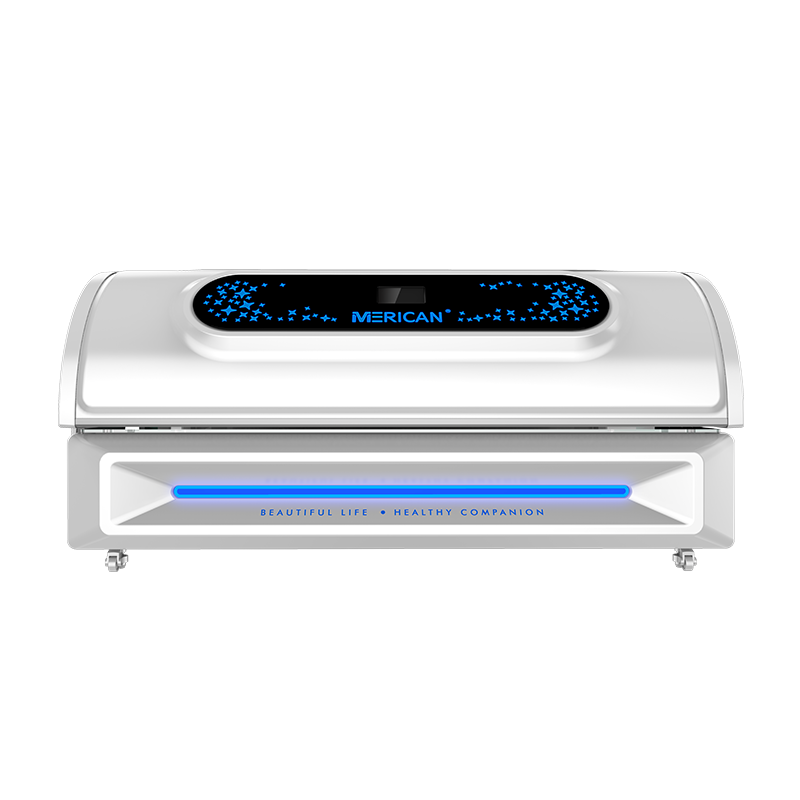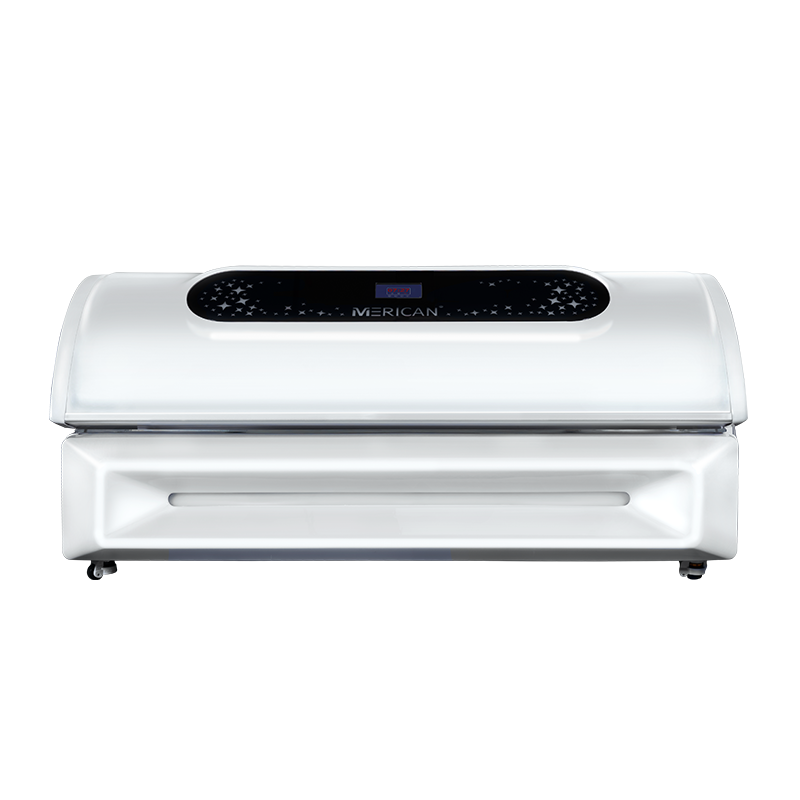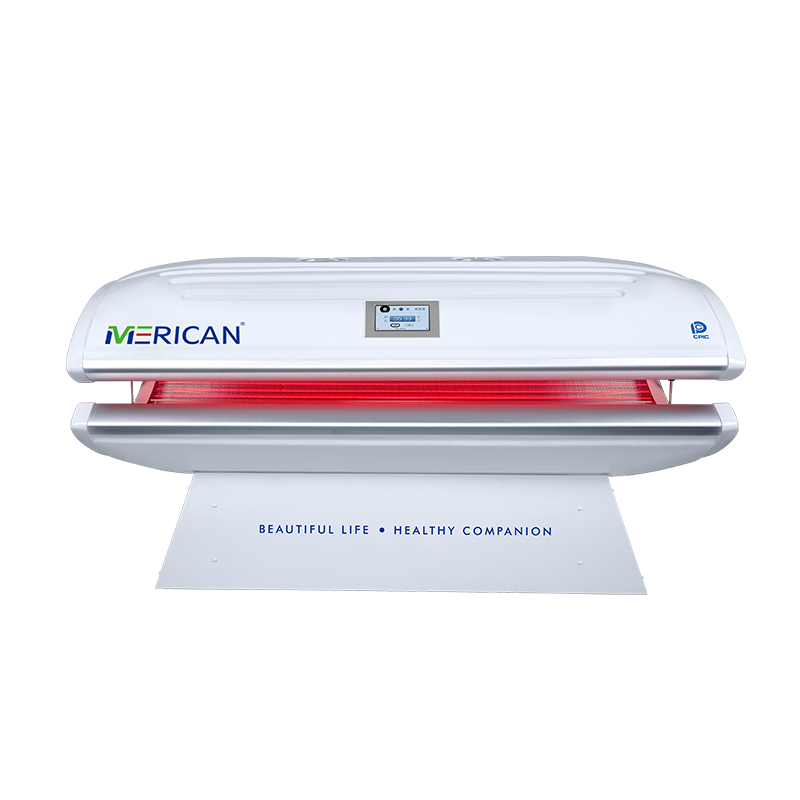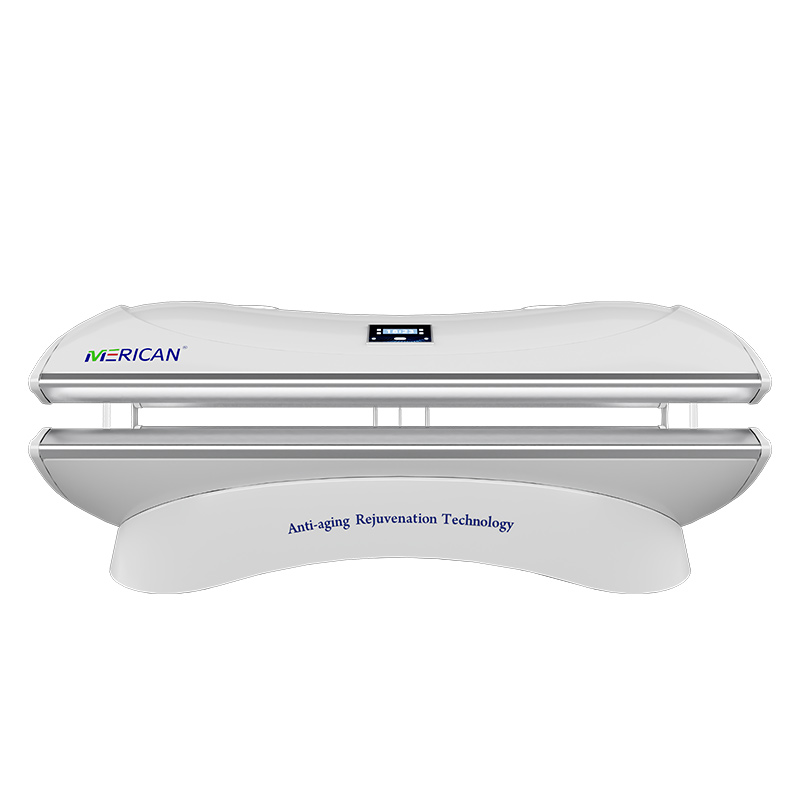प्रकाश चिकित्सा की आकर्षक दुनिया में गोता लगाते समय, हो सकता है कि आप स्वयं को अपना सिर खुजलाते और पूछते हुए पाएं, “इन्फ्रारेड और रेड लाइट थेरेपी के बीच क्या अंतर है??दोनों प्रकार की प्रकाश चिकित्सा में अद्वितीय गुण और लाभ हैं जो उन्हें कल्याण क्षेत्रों में लोकप्रिय बनाते हैं. इसलिए, आइए इस विषय पर प्रकाश डालें और लाल प्रकाश बनाम अवरक्त प्रकाश का पता लगाएं, जो आपके लिए कर सकता है!
लाल प्रकाश चिकित्सा क्या है?

लाल प्रकाश चिकित्सा हाल के वर्षों में जोर पकड़ रहा है, विशेष रूप से सौंदर्य और स्वास्थ्य उद्योगों में. लेकिन वास्तव में यह क्या है? लाल प्रकाश चिकित्सा कम-तरंग दैर्ध्य लाल प्रकाश का उपयोग करती है, आम तौर पर आसपास 600 को 700 नैनोमीटर. इसे एक आरामदायक कैम्पफ़ायर चमक के रूप में चित्रित करें - गर्म और आमंत्रित, फिर भी गर्मी के बिना यह भारी पड़ सकता है. एलईडी उपकरण और लेजर जैसे स्रोत इस प्रकाश का उत्सर्जन करते हैं, इसे विभिन्न प्रकार के अनुप्रयोगों के लिए प्रमुख बनाना, त्वचा की देखभाल से लेकर मांसपेशियों की रिकवरी तक.
इन्फ्रारेड लाइट थेरेपी क्या है??
अब, आइए गियर बदलें और करीब से देखें अवरक्त प्रकाश. इस प्रकार के प्रकाश की तरंगदैर्ध्य अधिक होती है, आमतौर पर बीच में 700 नैनोमीटर और 1 मिलीमीटर. इसकी कल्पना उस अदृश्य गर्मी के रूप में करें जिसे आप हीटर से महसूस करते हैं - आरामदायक और सुखदायक लेकिन ऐसा कुछ नहीं जिसे आप वास्तव में देख सकें! इन्फ्रारेड लाइट का उपयोग आमतौर पर हीटिंग लैंप में किया जाता है, सौना, और यहां तक कि कुछ प्रकार के चिकित्सीय उपकरण भी, लेकिन यह स्वास्थ्य लाभों से भी भरपूर है.
लाल बत्ती और इन्फ्रारेड लाइट के बीच मुख्य अंतर
यहां रेड लाइट थेरेपी बनाम के लिए एक तुलना तालिका दी गई है. इन्फ्रारेड थेरेपी:
| विशेषता | लाल बत्ती | अवरक्त प्रकाश |
| वेवलेंथ | 600-700 नैनोमीटर | 700 नैनोमीटर – 1 मिलीमीटर |
| दृश्यता | मानव आँख से दृश्यमान | मानव आँख के लिए अदृश्य |
| प्रवेश गहराई | उथला, मुख्य रूप से त्वचा की सतह को प्रभावित करता है | और गहरा, मांसपेशियों और ऊतकों में प्रवेश करता है |
| थर्मल प्रभाव | न्यूनतम ताप | गहन विश्राम के लिए गर्मी उत्पन्न करता है |
| सामान्य अनुप्रयोग | त्वचा का कायाकल्प, बुढ़ापा विरोधी, मुंहासा | मांसपेशी वसूली, दर्द निवारक, DETOXIFICATIONBegin के |
| मनोदशा वृद्धि | सेरोटोनिन उत्पादन को उत्तेजित करता है | समग्र विश्राम और कल्याण में सुधार हो सकता है |
| सुरक्षा | न्यूनतम जोखिम के साथ आम तौर पर सुरक्षित | आम तौर पर सुरक्षित; दिशानिर्देशों का पालन करें |
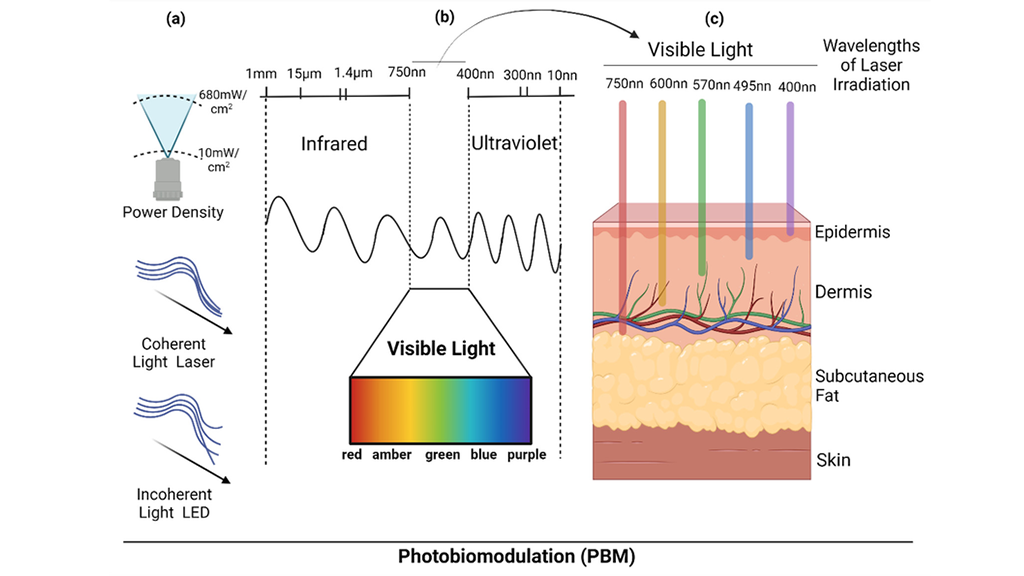
1. तरंग दैर्ध्य तुलना
यहीं पर चीजें थोड़ी तकनीकी हो जाती हैं, लेकिन डटे रहो! लाल बत्ती बनाम की बहस में मुख्य अंतर. अवरक्त प्रकाश उनकी तरंग दैर्ध्य में निहित है. लाल प्रकाश मानव आँख को दिखाई देता है, जबकि इन्फ्रारेड प्रकाश नहीं है. यह अंतर इसमें महत्वपूर्ण भूमिका निभाता है कि वे आपके शरीर के साथ कैसे संपर्क करते हैं.
लाल बत्ती, इसकी छोटी तरंगदैर्घ्य के साथ, मुख्य रूप से त्वचा की सतह को प्रभावित करता है. यह एक हल्की हवा के झोंके की तरह है जो आपके चेहरे को छूती है लेकिन बहुत गहराई तक प्रवेश नहीं करती है. वहीं दूसरी ओर, अवरक्त प्रकाश ऊतकों में गहराई तक प्रवेश कर सकता है, अंतर्निहित मुद्दों के इलाज के लिए इसे और अधिक प्रभावी बनाना. इसे एक हल्की मालिश बनाम एक गहरी ऊतक मालिश की तरह समझें - दोनों की अपनी खूबियाँ हैं, लेकिन प्रत्येक का एक अलग उद्देश्य होता है.
2. प्रवेश गहराई
इन्फ्रारेड प्रकाश की विशिष्ट विशेषताओं में से एक इसकी लाल प्रकाश की तुलना में त्वचा में अधिक गहराई तक प्रवेश करने की क्षमता है. जबकि लाल बत्ती मुख्य रूप से सतह पर काम करती है, अवरक्त प्रकाश गहराई तक गोता लगाता है, मांसपेशियों और जोड़ों तक पहुंचना. यह विशेषता इन्फ्रारेड थेरेपी को पुराने दर्द या मांसपेशियों में तनाव से जूझ रहे लोगों के लिए विशेष रूप से फायदेमंद बनाती है. यदि लाल बत्ती है तो कोमल सतह का उपचार है, इन्फ्रारेड गहन पुनर्स्थापनात्मक उपचार है.
3. थर्मल प्रभाव
आप यह भी देखेंगे कि अवरक्त प्रकाश लाल प्रकाश की तुलना में अधिक ऊष्मा उत्पन्न करता है. यह तापन प्रभाव मांसपेशियों को आराम देने के लिए उत्कृष्ट है, तनाव और परेशानी को कम करने में मदद करना. के विपरीत, रेड लाइट थेरेपी त्वचा के कायाकल्प और उपचार पर अधिक केंद्रित है. यह सूरज की किरणों में आराम करने जैसा है जो अच्छा और गर्म लगता है, बनाम एक आरामदायक कंबल के साथ लिपटना जो आपको गर्मी में लपेटता है.
4. मानव नेत्र की दृश्यता
कभी इन्फ्रारेड लाइट देखने की कोशिश की है? बिगड़ने की चेतावनी: आप नहीं कर सकते! यह नग्न आंखों के लिए पूरी तरह से अदृश्य है. लाल बत्ती, तथापि, यह आसानी से दिखाई देता है और अक्सर इसके शांत वातावरण के लिए विभिन्न सेटिंग्स में उपयोग किया जाता है. लाल रोशनी को जीवंत सूर्यास्त के रूप में सोचें, जबकि इन्फ्रारेड प्रकाश उस गर्म चमक की तरह है जो सूरज डूबने के बाद भी लंबे समय तक बनी रहती है - दोनों अपने आप में सुंदर हैं, लेकिन अलग-अलग तरीकों से अनुभव किया गया.
रेड लाइट थेरेपी के लाभ
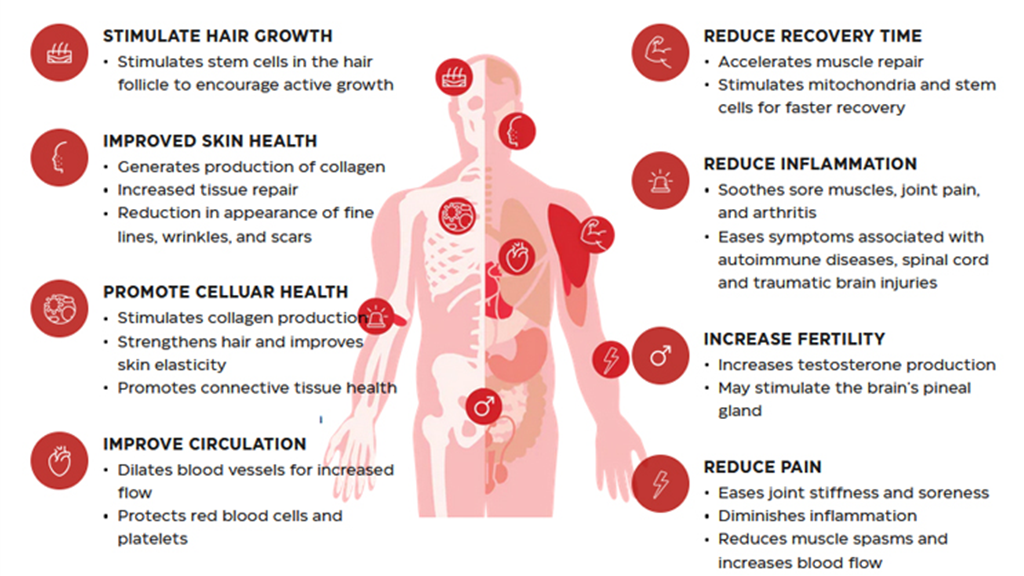
1. त्वचा का स्वास्थ्य और बुढ़ापा रोधी
इसलिए, इन्फ्रारेड लाइट थेरेपी के क्या फायदे हैं?, खासकर लाल बत्ती के संबंध में? लाल बत्ती चिकित्सा के लिए, यह कोलेजन उत्पादन को बढ़ावा देने में एक चैंपियन है. कोलेजन वह प्रोटीन है जो हमारी त्वचा को मजबूत और युवा बनाए रखता है. इसके उत्पादन को उत्तेजित करके, रेड लाइट थेरेपी महीन रेखाओं को कम करने में मदद करती है, त्वचा की बनावट में सुधार करें, और कष्टप्रद मुँहासों से निपटें. यह आपकी त्वचा पर रिफ्रेश बटन दबाने जैसा है, उस युवा चमक को वापस लाना!
2. मांसपेशियों की रिकवरी और दर्द से राहत
यदि आप एक एथलीट हैं या ऐसे व्यक्ति हैं जो सक्रिय रहना पसंद करते हैं, रेड लाइट थेरेपी मांसपेशियों की रिकवरी में सहायता कर सकती है. यह दर्द को कम करता है और उपचार में तेजी लाता है, इसे वर्कआउट के बाद एक उत्कृष्ट विकल्प बनाता है. कल्पना कीजिए कि आप दिन भर की गतिविधि के बाद घर आ रहे हैं और महसूस कर रहे हैं कि जैसे ही आप लाल रोशनी की गर्म चमक का आनंद लेते हैं, वे दर्द और दर्द दूर हो जाते हैं।.
3. मनोदशा वृद्धि
थोड़ा उदास महसूस हो रहा है? रेड लाइट थेरेपी शायद आपका उत्साह बढ़ा सकती है. गर्म चमक सेरोटोनिन के उत्पादन को उत्तेजित कर सकती है, इसे अक्सर "ख़ुशी का हार्मोन" कहा जाता है। यह बढ़ावा आपके मूड और समग्र कल्याण की भावना में सुधार कर सकता है. यह एक स्वाभाविक पिक-मी-अप है, ठंड के दिन में एक कप गर्म चाय की तरह!
इन्फ्रारेड लाइट थेरेपी के लाभ
1. गहन ऊतक उपचार
इन्फ्रारेड प्रकाश गहरे ऊतक उपचार को बढ़ावा देने की अपनी क्षमता में चमकता है. ऊतकों में रक्त प्रवाह और ऑक्सीजन को बढ़ाकर, यह शीघ्र स्वस्थ होने और दर्द से राहत दिलाने में सहायता करता है. यदि आपने कभी डीप टिशू मसाज करवाया है, आप जानते हैं कि यह कितना तरोताजा करने वाला अनुभव हो सकता है. अब, उस अनुभव को प्रकाश की शक्ति के माध्यम से घटित होने की कल्पना करें! यह आपकी मांसपेशियों के लिए सुखदायक बाम जैसा है, ठीक उसी समय जब आपको इसकी आवश्यकता हो.
2. उन्नत परिसंचरण
इन्फ्रारेड लाइट थेरेपी का एक अन्य महत्वपूर्ण लाभ परिसंचरण को बढ़ाने की इसकी क्षमता है. बेहतर रक्त प्रवाह का अर्थ है आपके पूरे शरीर में पोषक तत्वों और ऑक्सीजन की बेहतर डिलीवरी, जो आपको अधिक ऊर्जावान और जीवंत महसूस करा सकता है. यह आपके शरीर को एक छोटी सी शुरुआत देने जैसा है, प्रत्येक कोशिका को स्फूर्तिदायक बनाना!
3. प्रतिरक्षा प्रणाली समर्थन
नियमित उपयोग के साथ, इन्फ्रारेड थेरेपी आपकी प्रतिरक्षा प्रणाली का भी समर्थन कर सकती है. बढ़ा हुआ परिसंचरण और विषहरण आपके शरीर को बेहतर ढंग से कार्य करने में मदद करता है. इसे आपको स्वस्थ रखने और दिन के लिए तैयार रहने में मदद करने के लिए सुदृढीकरण भेजने के रूप में सोचें!
लाल बत्ती और इन्फ्रारेड लाइट के बीच चयन करना
इसलिए, कौन सा बहतर है: लाल बत्ती थेरेपी या इन्फ्रारेड? उत्तर वास्तव में आपकी आवश्यकताओं पर निर्भर करता है. यदि आप त्वचा के स्वास्थ्य और सतही समस्याओं पर ध्यान केंद्रित कर रहे हैं, लाल बत्ती आपका पसंदीदा है. तथापि, गहन ऊतक संबंधी चिंताओं और मांसपेशियों की रिकवरी के लिए, इन्फ्रारेड बेहतर विकल्प हो सकता है. यह सब इस बारे में है कि आप क्या हासिल करना चाहते हैं.

उपयोग का उद्देश्य
गोता लगाने से पहले, अपने आप से पूछें कि आप क्या हासिल करने की उम्मीद कर रहे हैं. चाहे वह त्वचा की देखभाल हो या मांसपेशियों की रिकवरी, आपका लक्ष्य यह निर्धारित करने में मदद कर सकता है कि कौन सी रोशनी आपके लिए सर्वोत्तम है. उदाहरण के लिए, यदि आप झुर्रियाँ कम करना और त्वचा की लोच में सुधार करना चाहते हैं, रेड लाइट थेरेपी संभवतः आपके लिए सर्वोत्तम होगी. लेकिन अगर आप जोड़ों के दर्द या पुरानी सूजन से जूझ रहे हैं, इन्फ्रारेड इसका उत्तर हो सकता है.
उपचार क्षेत्र
विचार करें कि आप थेरेपी कहाँ लागू करेंगे. बड़े क्षेत्रों या गहरे ऊतकों के लिए, इन्फ्रारेड प्रकाश आपको आपके पैसे का सर्वोत्तम लाभ दे सकता है. यदि आप अपने चेहरे या अन्य नाजुक त्वचा जैसे विशिष्ट क्षेत्रों को लक्षित कर रहे हैं, लाल बत्ती आपकी सबसे अच्छी दोस्त हो सकती है.
सुरक्षा विचार
जबकि दोनों उपचार आम तौर पर सुरक्षित हैं, ध्यान में रखने योग्य कुछ सावधानियां हैं. अत्यधिक एक्सपोज़र से त्वचा में जलन हो सकती है, इसलिए यदि आप अनिश्चित हैं तो दिशानिर्देशों का पालन करना और स्वास्थ्य देखभाल पेशेवर से परामर्श करना महत्वपूर्ण है. हमेशा अपनी भलाई को प्राथमिकता दें!
घरेलू उपयोग के लिए, प्रतिष्ठित ब्रांडों के उपकरण चुनना सुनिश्चित करें और अनुशंसित उपयोग समय का पालन करें. आपकी त्वचा और शरीर आपको धन्यवाद देंगे!
निष्कर्ष
लाल बत्ती बनाम की बहस में. अवरक्त प्रकाश, दोनों के अपने अनूठे लाभ और अनुप्रयोग हैं. उनके मतभेदों को समझना आपको अपनी आवश्यकताओं के लिए सही चिकित्सा चुनने का अधिकार देता है. चाहे आप अपनी त्वचा को फिर से जीवंत करना चाहते हों या गहरे ऊतकों को ठीक करना चाहते हों, लाइट थेरेपी आपकी कल्याण यात्रा को बढ़ाने के लिए अविश्वसनीय क्षमता प्रदान करती है. तो क्यों न इन शानदार विकल्पों का पता लगाया जाए और पता लगाया जाए कि आपके लिए सबसे अच्छा क्या काम करता है?
पूछे जाने वाले प्रश्न
1. क्या मैं लाल बत्ती और अवरक्त प्रकाश का एक साथ उपयोग कर सकता हूँ??
बिल्कुल! बहुत से लोग पाते हैं कि दोनों उपचारों के संयोजन से उनके लाभ बढ़ सकते हैं और अधिक व्यापक उपचार प्रदान किया जा सकता है.
2. मुझे कितनी बार लाल या अवरक्त प्रकाश चिकित्सा का उपयोग करना चाहिए??
यह अलग-अलग व्यक्तियों के अनुसार भिन्न-भिन्न होता है, लेकिन आम तौर पर, 3-5 अधिकांश लोगों के लिए सप्ताह में कई बार एक अच्छी शुरुआत होती है. अपने शरीर की सुनें और आवश्यकतानुसार समायोजित करें!
3. क्या कोई भी दुष्प्रभाव हैं?
जबकि दुर्लभ, कुछ व्यक्तियों को त्वचा में हल्की जलन या संवेदनशीलता का अनुभव हो सकता है. धीमी शुरुआत करना और यह देखना सबसे अच्छा है कि आपका शरीर कैसे प्रतिक्रिया करता है.
4. घरेलू उपयोग के लिए किन उपकरणों की अनुशंसा की जाती है?
अच्छी समीक्षाओं वाले प्रतिष्ठित ब्रांडों की तलाश करें. एलईडी पैनल, हाथ से चलने वाले उपकरण, और इन्फ्रारेड सौना लोकप्रिय विकल्प हैं, प्रत्येक अलग-अलग लाभ प्रदान करता है.
5. क्या बच्चे इन उपचारों का उपयोग कर सकते हैं??
बच्चों के लिए कोई भी थेरेपी शुरू करने से पहले हमेशा बाल रोग विशेषज्ञ से सलाह लें. सुरक्षा सबसे पहले आती है, खासकर जब बात युवाओं की आती है!

